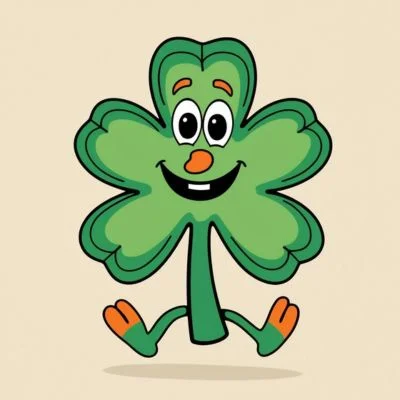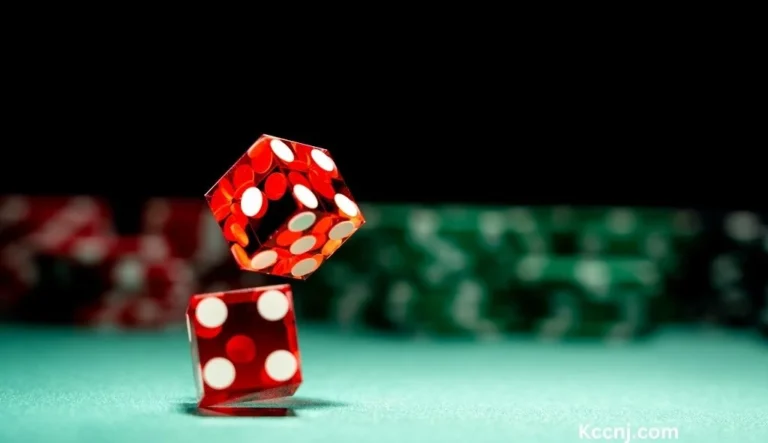Dutch Christmas Traditions: Sinterklaas to Kerstmis
Dutch Christmas traditions blend Sinterklaas celebrations on December 5th with Christmas festivities on December 24-26th. These holidays involve gift-giving, family gatherings, special meals, and religious observances, creating a unique festive season in the Netherlands.
Sinterklaas: The Dutch Santa Claus
The Arrival of Sinterklaas
Sinterklaas, the Dutch version of Santa Claus, plays a central role in the festive season in the Netherlands. The celebrations begin in mid-November when Sinterklaas arrives from Spain. This event, known as the “intocht,” marks the start of the holiday season.
Sinterklaas is portrayed as a kindly bishop wearing red robes and a tall, pointed mitre. He travels by ship from Spain to Amsterdam’s harbor, accompanied by his white horse and a large sack full of gifts for children. The mayor and citizens of Amsterdam gather at the harbor to welcome Sinterklaas. The arrival is marked by ringing bells, cheering crowds, and a brass band leading a parade through the streets.
Zwarte Piet: Sinterklaas’ Helpers

Sinterklaas is assisted by helpers called “Zwarte Pieten” or “Sooty Pieten.” These characters have been a subject of controversy in recent years due to concerns about racial stereotyping. The traditional portrayal of Zwarte Piet has been evolving, with many places now opting for “Sooty Pieten” with faces marked by soot rather than full black makeup.
The Pieten are said to keep a record of children’s behavior throughout the year in a big book. They help Sinterklaas distribute gifts and sweets to well-behaved children.
Sinterklaas Eve: December 5th
The main Sinterklaas celebration occurs on the evening of December 5th, known as “Sinterklaasavond” or St. Nicholas’ Eve. This is when Dutch children receive their presents.
In the weeks leading up to December 5th, children often leave their shoes by the fireplace or windowsill, singing Sinterklaas songs. They hope Sinterklaas will visit during the night and leave small gifts or sweets in their shoes. Children are told that if they leave hay and carrots for Sinterklaas’ horse, they’re more likely to receive treats.
Many families tell children that Sinterklaas and a Piet make weekly visits, encouraging them to leave their shoes out every Saturday until the main Sinterklaas party on December 5th.
Gift-Giving Traditions
On Sinterklaas Eve, families exchange gifts. These presents are often creatively wrapped to add an element of surprise. For example, a small gift might be hidden inside a potato, or a larger gift could be hidden in the attic with clues leading to its location.
A unique aspect of Dutch gift-giving during Sinterklaas is the inclusion of a personal verse with each gift. The giver writes a short poem about the recipient, adding a personal touch to the present. All gifts are signed as being from “Sinterklaas,” maintaining the mystery and magic of the tradition.
Traditional Sinterklaas Treats
Several traditional treats are associated with Sinterklaas celebrations:
- Kruidnoten and pepernoten: Small, spiced cookies
- Speculoos: Spiced shortcrust biscuits
- Chocolate letters: Often the first initial of the recipient’s name
- Marzipan figures
- Taai-taai: A chewy, anise-flavored cookie
Christmas in the Netherlands
While Sinterklaas is a significant part of Dutch holiday traditions, Christmas itself is also celebrated, albeit in a quieter manner compared to some other countries.
Christmas Eve: December 24th
Christmas celebrations in the Netherlands begin on the evening of December 24th, known as “kerstavond.” Many families attend church services on this night, often featuring carol singing and prayers focused on the birth of Christ.
First Christmas Day: December 25th
December 25th is known as “Eerste Kerstdag” or First Christmas Day in the Netherlands. This day is typically spent with family, attending church services, and enjoying a special Christmas meal.
The Christmas story, as told in the Bible, is central to the religious aspect of the holiday. Christians celebrate the birth of Jesus Christ, recounting how an angel appeared to shepherds announcing the birth of a Savior in Bethlehem, and how the Three Wise Men followed a star to bring gifts to the baby Jesus.
Second Christmas Day: December 26th
The day after Christmas, December 26th, is called “Tweede Kerstdag” or Second Christmas Day. This additional holiday is often more relaxed than Christmas Day. Many Dutch families use this day to visit extended family, go on outings, or even do some shopping, as many stores are open on this day.
Christmas Decorations and Traditions
Dutch families decorate their homes for Christmas, often including:
- Christmas trees
- Lights and candles
- Evergreen and holly decorations
- Nativity scenes
Some children hang stockings by the fireplace on Christmas Eve, although this is less common than during Sinterklaas celebrations.
Christmas Meals
The Christmas meal is an important part of Dutch celebrations. Traditional dishes often include:
- Roast meat (such as hare, venison, goose, or turkey)
- Potatoes
- Winter vegetables
- “Gourmetten”: A popular Christmas dinner tradition where family members cook their own small portions of meat and vegetables on a tabletop grill
Special drinks like eggnog and mulled wine are often prepared for the celebration.
Santa Claus in the Netherlands
While Sinterklaas is the primary gift-giver in Dutch tradition, the figure of Santa Claus (called “Kerstman” or Christmas Man) has also become part of Dutch Christmas celebrations, likely due to American cultural influence. Some Dutch children believe that Santa Claus comes from Lapland in Finland on Christmas Eve night to deliver additional presents.
Unique Dutch Holiday Traditions
Letterbanket
On St. Nicholas Eve, many Dutch families enjoy a “letterbanket,” which is a pastry made in the shape of the first letter of the family’s last name. In some families, each person receives a small letterbanket with their first initial.
Christmas Horns in Eastern Holland
In the eastern part of Holland, some farm families have a unique tradition of announcing the coming of Christmas. From the first Sunday of Advent (the fourth Sunday before Christmas) until Christmas Eve, they blow horns made from hollow elder-tree branches. These horns produce an eerie sound as they’re blown at every farm in the neighborhood.
Two Days of Christmas
Unlike many countries that primarily celebrate on December 25th, the Netherlands observes two full days of Christmas. This allows for extended family gatherings, leisurely meals, and various activities like playing games and watching movies.
The Spirit of Dutch Christmas
While modern commercialization has influenced Christmas celebrations in the Netherlands, there remains a strong emphasis on the holiday’s original spirit of sharing and giving. Many Dutch people participate in charitable activities during the holiday season, such as donating to organizations like the Salvation Army.
The focus on family time, both during Sinterklaas and Christmas celebrations, is a key aspect of Dutch holiday traditions. These occasions provide opportunities for families to come together, share meals, exchange gifts, and create lasting memories.
Balancing Sinterklaas and Christmas
One unique aspect of the Dutch holiday season is the balance between Sinterklaas and Christmas celebrations. While Sinterklaas (December 5th) is often the main gift-giving occasion, especially for children, Christmas maintains its importance as a religious holiday and a time for family gatherings.
This dual celebration allows Dutch families to spread out their holiday festivities over a longer period, potentially reducing some of the stress and commercialization that can be associated with a single gift-giving day.
Adapting Traditions
As with many cultural traditions, Dutch Christmas and Sinterklaas celebrations are evolving. The controversy surrounding the traditional portrayal of Zwarte Piet has led to changes in how this character is presented in many communities. This demonstrates how the Dutch are working to maintain their cherished traditions while also addressing concerns about inclusivity and cultural sensitivity.

Christmas for Expats in the Netherlands
For expats living in the Netherlands, the Dutch approach to Christmas can be an interesting blend of familiar and unique elements. While some aspects, like Christmas trees and family gatherings, may be similar to traditions in other countries, the prominence of Sinterklaas celebrations and the two-day Christmas observance can be new experiences.
Expats often find that participating in these Dutch traditions can be a wonderful way to immerse themselves in the local culture and create new holiday memories.
The Role of Food in Dutch Holiday Traditions
Food plays a significant role in Dutch holiday celebrations, both for Sinterklaas and Christmas. Special treats and meals are an integral part of the festivities, bringing families together and marking these occasions as distinct from everyday life.
Sinterklaas Treats
During the Sinterklaas period, several specific treats are enjoyed:
- Pepernoten: Small, round, spiced cookies
- Kruidnoten: Similar to pepernoten but harder in texture
- Speculaas: Spiced shortbread cookies often molded into windmill shapes
- Chocolate letters: Usually representing the first letter of a person’s name
- Marzipan figures: Often shaped like fruits or animals
Christmas Foods
Christmas meals in the Netherlands often feature:
- Roast meats: Such as turkey, goose, or beef
- Venison or other game meats
- Root vegetables: Potatoes, carrots, parsnips
- Kerstbrood: A sweet bread filled with dried fruits and nuts
- Kerststol: A Christmas version of the Easter bread “Paasstol”
The “gourmetten” tradition, where family members cook small portions of meat and vegetables on a tabletop grill, is particularly popular for Christmas dinners. This interactive meal encourages conversation and family bonding.
The Influence of Dutch Christmas Traditions
Dutch Christmas traditions, particularly those related to Sinterklaas, have had an influence beyond the Netherlands. The Dutch Sinterklaas is believed to be one of the main inspirations for the modern-day Santa Claus figure popular in many countries.
The tradition of leaving shoes out for Sinterklaas to fill with treats has similarities to the hanging of stockings in other cultures. Similarly, the concept of Sinterklaas keeping a book of children’s behavior throughout the year is echoed in the “naughty or nice” list associated with Santa Claus in other traditions.







